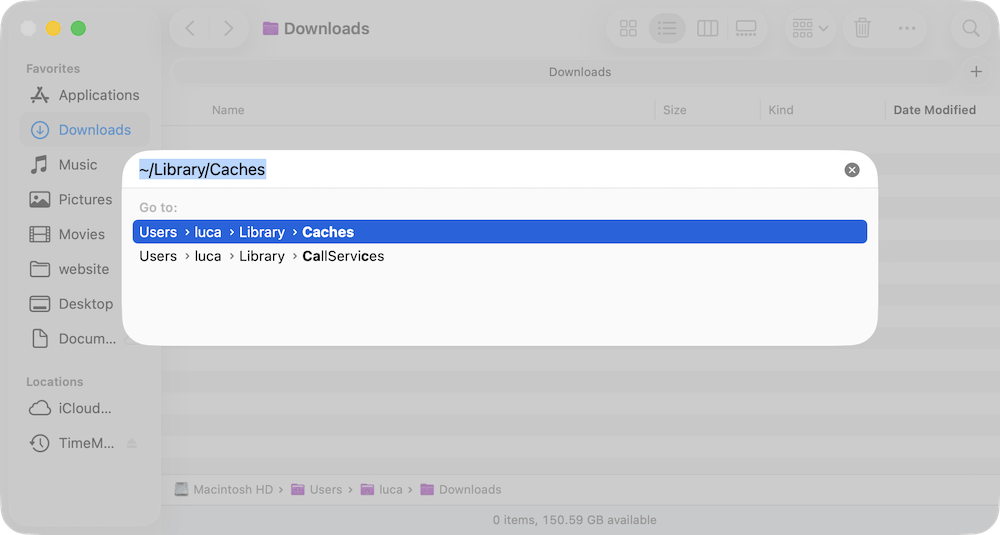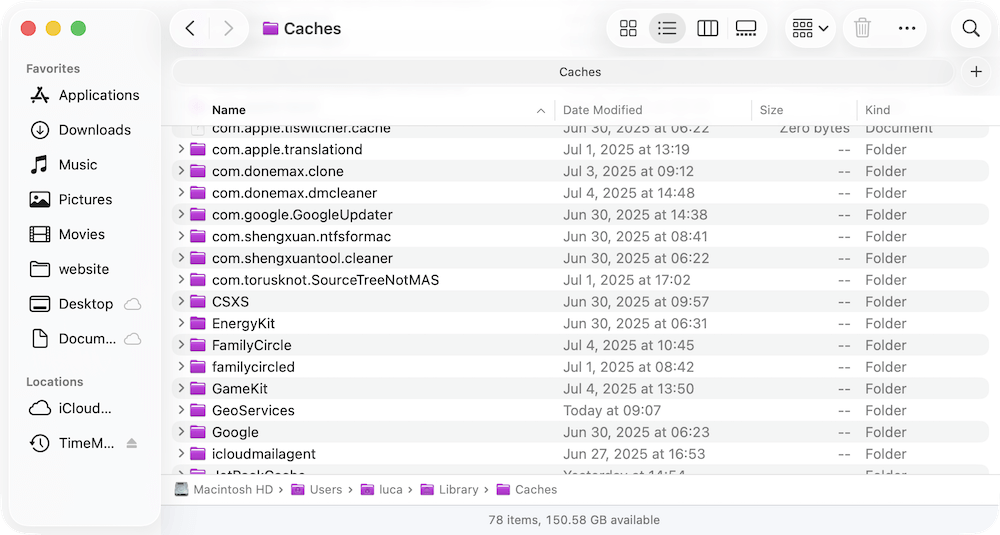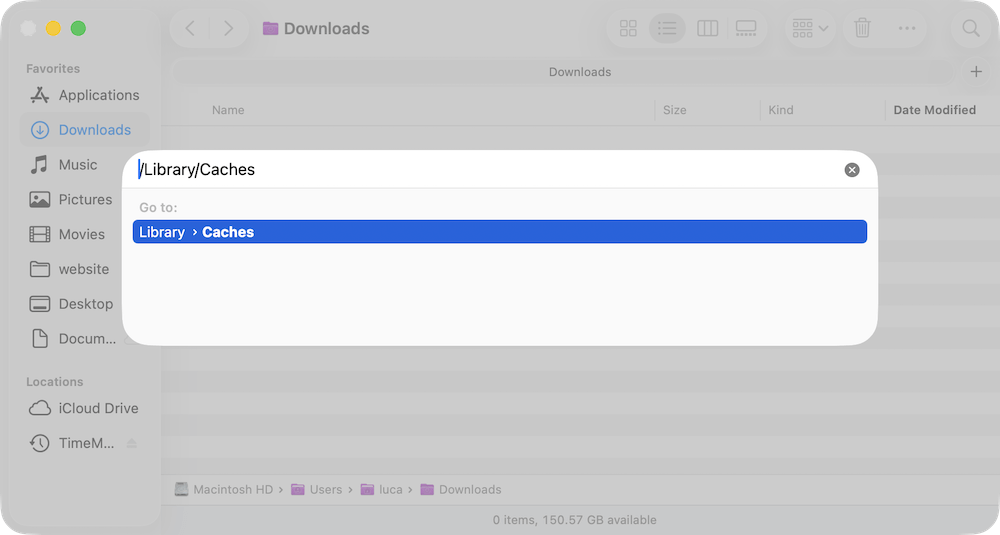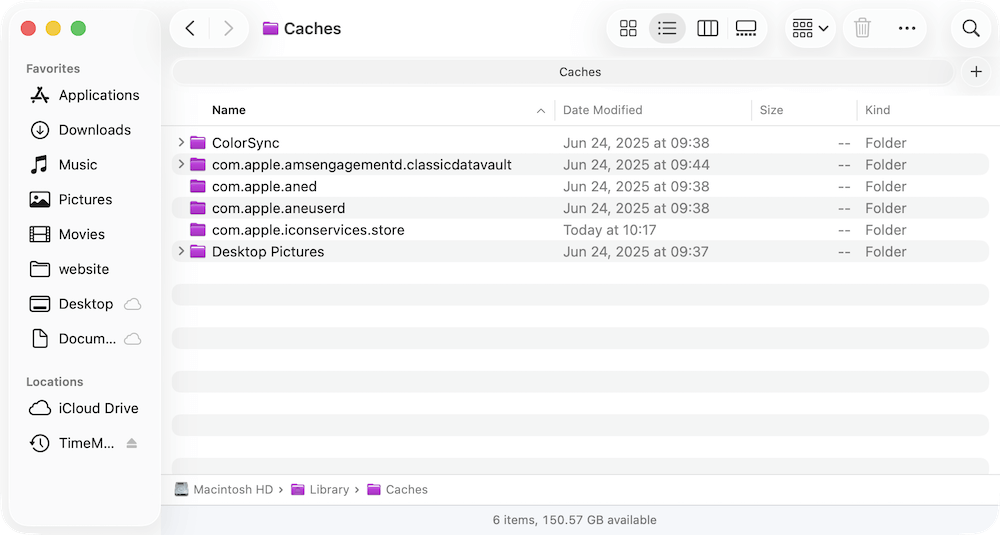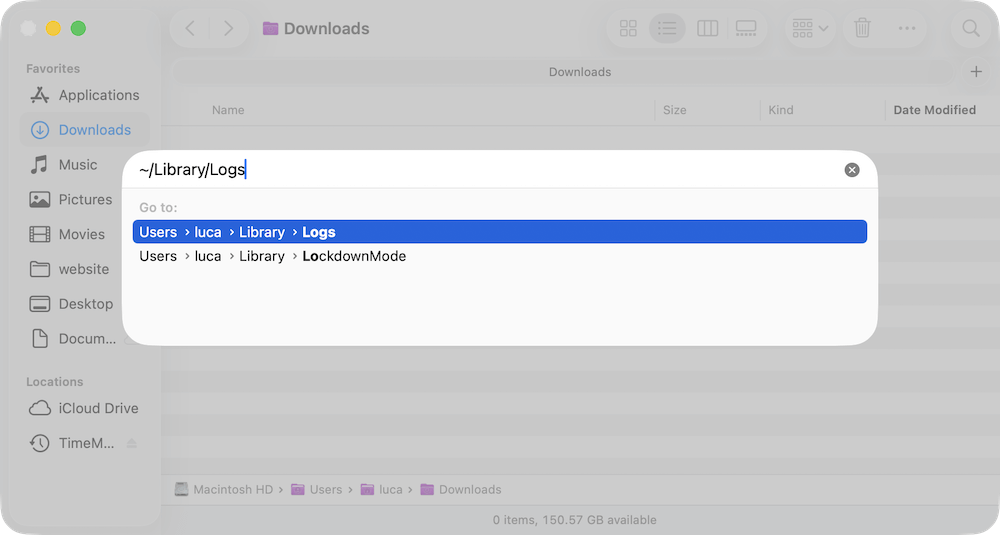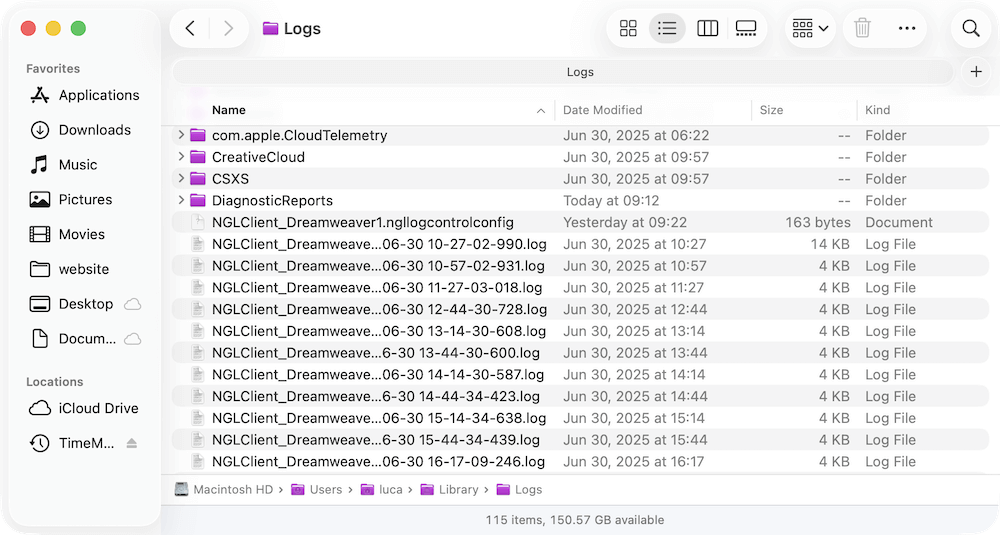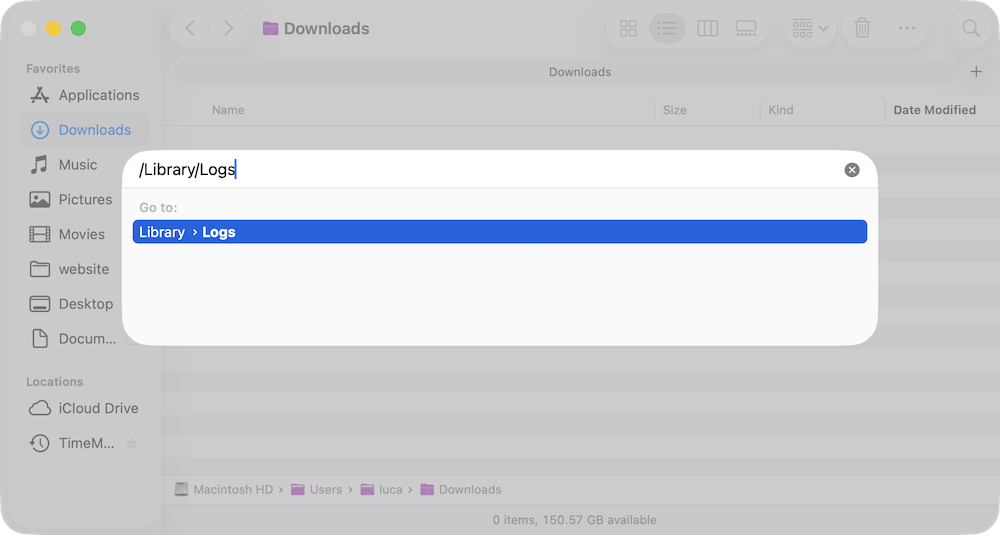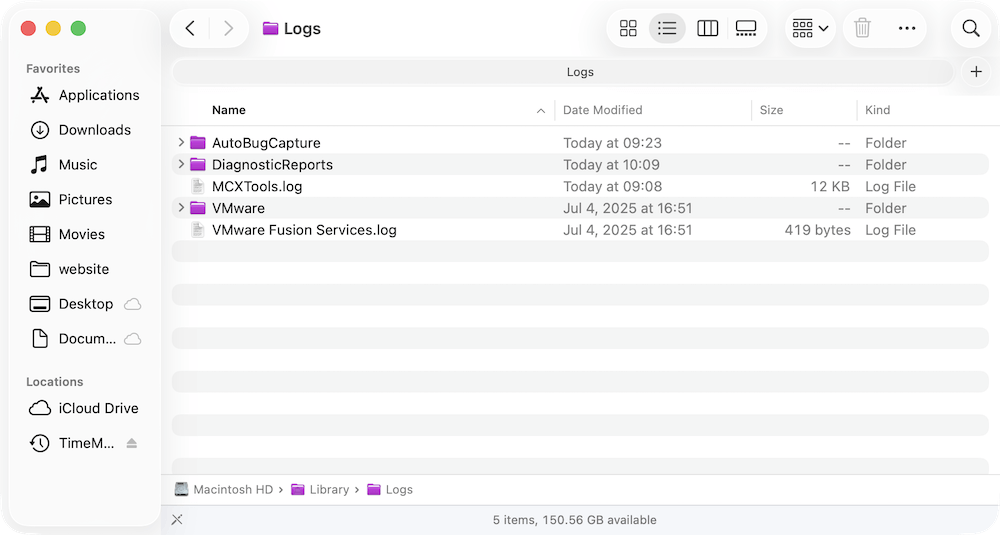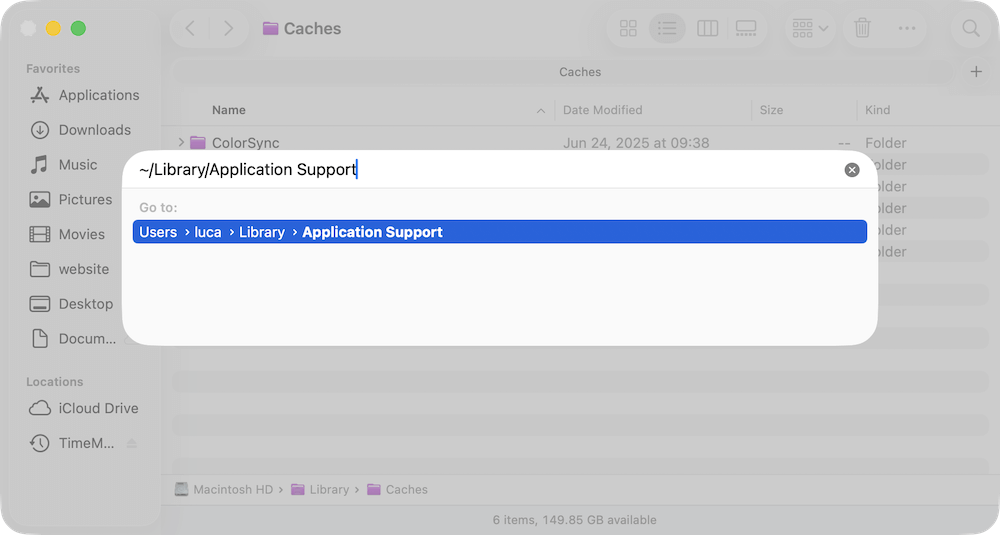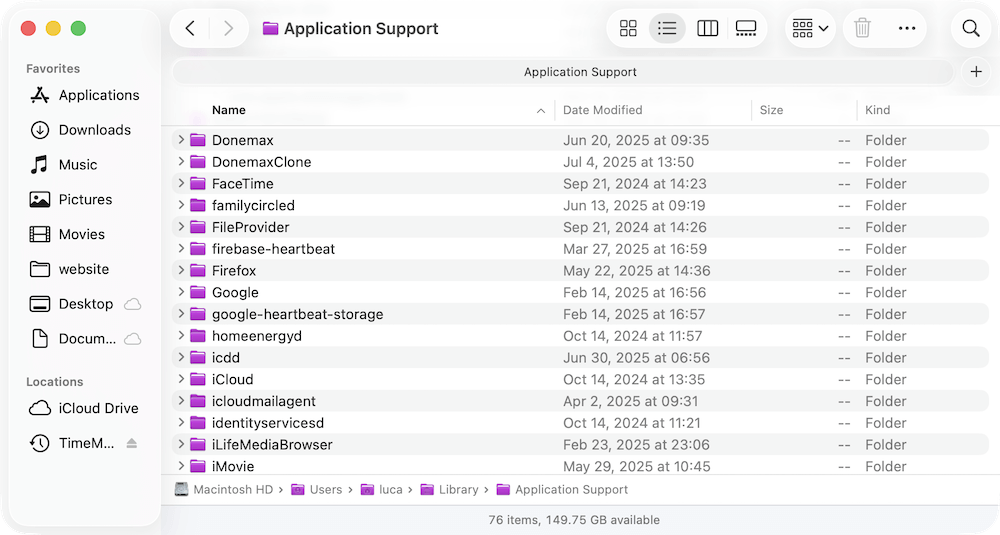Before we start: Clean up data is necessary after upgrading to macOS Tahoe 26. It can speed up Mac and make the machine run smoothly. Donemax DMcleaner for Mac offers comprehensive solutions to clear junk data and optimize Mac.
PAGE CONTENT:
Upgrading your Mac to the latest macOS Tahoe 26 brings exciting new features, performance enhancements, and improved system stability. But like any major system update, it also leaves behind a trail of unnecessary junk files that can eat up precious disk space and slow down your machine. If your Mac feels sluggish after the upgrade or you're running low on storage, it's time to clean up junk data.
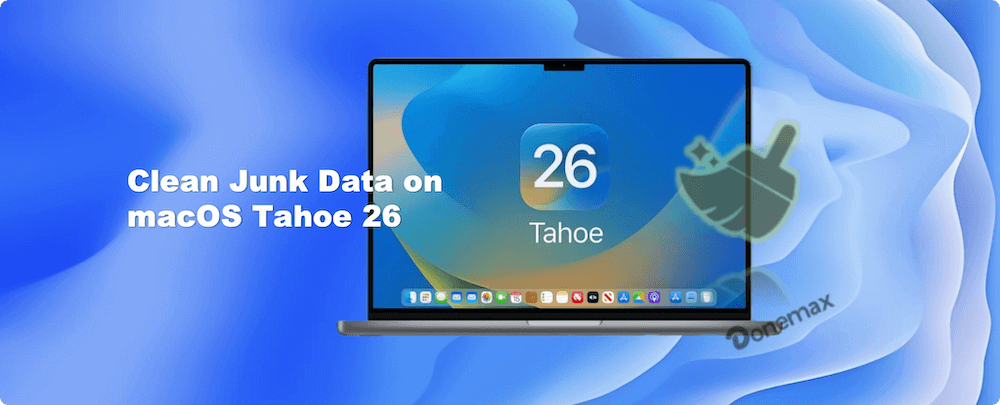
In this guide, we'll walk you through everything you need to know about safely cleaning up junk data after upgrading to macOS Tahoe 26 — using both manual methods and automated tools. Let's help your Mac run like new again.
What is Junk Data After macOS Upgrade?
Junk data refers to unnecessary files, system leftovers, and temporary items that accumulate during and after a macOS upgrade. While the system installs macOS Tahoe 26 successfully, remnants of the previous system, installer files, caches, and logs often remain hidden, occupying gigabytes of storage.
Typical junk files generated after an upgrade include:
System Cache Files: Temporary files that help apps and the OS run smoothly but become outdated after an upgrade.
Old Log Files: System and application logs no longer relevant to the new OS version.
Temporary Update Files: Files created during the installation of macOS Tahoe 26, which should be removed post-upgrade.
Redundant Backups: Local backups or system snapshots that aren't needed anymore.
Leftover App Data: Fragments of applications uninstalled or incompatible with macOS Tahoe 26.
Over time, this junk data can accumulate, leading to storage shortages, slower performance, and even application glitches.
Why Cleaning Junk Data is Necessary After Upgrading to macOS Tahoe 26
While macOS is designed to handle upgrades efficiently, it doesn't always clean up everything. Here's why it's essential to manually clean junk data after installing macOS Tahoe 26:
- Free Up Disk Space: Junk files can consume several gigabytes, which is critical if you have limited SSD space.
- Improve Performance: Clearing cache and temporary files reduces system load, making your Mac run faster.
- Resolve App Glitches: Leftover files from outdated apps can conflict with the new OS, causing instability.
- Enhance System Stability: Cleaning ensures macOS Tahoe 26 functions optimally without interference from legacy files.
- Prevent Storage Warnings: If your disk space is critically low, system operations like updates or backups may fail.
Regular cleanup maintains both your system's performance and longevity.
Manual Methods to Clean Up Junk Data on macOS Tahoe 26
Cleaning junk files manually gives you full control over what stays on your Mac and what gets removed. While third-party tools simplify this process, doing it yourself ensures you're aware of every change happening on your system. Follow these safe, step-by-step methods to manually clean up your Mac after the macOS Tahoe 26 upgrade.
Method 1. Clear System and User Caches
Cache files temporarily store data to help your Mac and apps run faster. However, after upgrading to macOS Tahoe 26, many cache files become outdated, irrelevant, or corrupted, potentially causing slowdowns or glitches. You can follow the steps to clear the cache data on Mac.
Steps to clear User Caches:
- Open Finder
- From the top menu, select Go → Go to Folder...
- Type: ~/Library/Caches and press Enter
![clean up junk data after upgrading to macOS Tahoe]()
- You'll see folders for different apps (e.g., Safari, Google, Adobe)
- Open each folder and delete files inside, especially large or old files
- Be cautious not to delete folders unless you're sure they belong to apps you've uninstalled
![clean up junk data after upgrading to macOS Tahoe]()
To clear System-wide Caches:
- Repeat Go to Folder using: /Library/Caches
![clean up junk data after upgrading to macOS Tahoe]()
- Review cache folders
- Delete files from apps or services you recognize as safe to clean
![clean up junk data after upgrading to macOS Tahoe]()
Safety Tips:
- Avoid deleting system-critical caches unless you're sure
- It's advisable to restart your Mac after clearing caches
- You may notice apps running slower initially as new cache files rebuild
💡 Pro Tip: Focus on large cache folders, like those from browsers, Adobe products, or media apps, as they often store gigabytes of temporary data.
Method 2. Remove Old System Log Files
System and application logs record activities, errors, and events, useful for troubleshooting. However, after upgrading to macOS Tahoe 26, most old logs are no longer helpful and occupy unnecessary space.
How to clear log files:
- Open Finder → Go to Folder...
- Enter: ~/Library/Logs
![clean up junk data after upgrading to macOS Tahoe]()
- Review files like system.log, appname.log, or crash reports
- Move outdated or irrelevant logs to Trash
![clean up junk data after upgrading to macOS Tahoe]()
For system-wide logs:
- Go to /Library/Logs
![clean up junk data after upgrading to macOS Tahoe]()
- Look for logs from applications or macOS services
- Delete old or redundant files
![clean up junk data after upgrading to macOS Tahoe]()
💡 Advanced Tip:
★ Check Console app to view active logs before manual deletion
★ Keep recent crash reports if you're experiencing issues
★ Logs regenerate automatically, so deleting them won't harm your system
★ This helps confirm which logs are outdated
Method 3. Delete Leftover macOS Installation Files
Major upgrades like macOS Tahoe 26 often leave behind large installation files consuming valuable disk space.
Locate and delete the macOS installer:
- Open Applications folder
- Look for files such as:
✓ Install macOS Tahoe.app
✓ macOSInstaller.pkg - If present, drag them to Trash and empty the Trash
Remove Temporary Upgrade Files:
- Open Finder → Go to Folder...
- Type: /macOS Install Data
- If the folder exists and your upgrade completed successfully, delete it
Size Example:
- The macOS installer can occupy 12-20 GB of space
- Temporary files in /macOS Install Data may take up several gigabytes
Why it's safe:
- Once your system is upgraded and working properly, these files are unnecessary
- Always ensure your Mac is running the latest version before deletion
Method 4. Clean Up Downloads and Application Support Folders
The Downloads and Application Support folders are prime locations for leftover junk:
Clean the Downloads folder:
- Open Finder → Downloads
- Sort files by size (Click the size column)
- Remove:
✓ Old installation files
✓ Disk images (.dmg)
✓ Zip archives
✓ Media files you no longer need
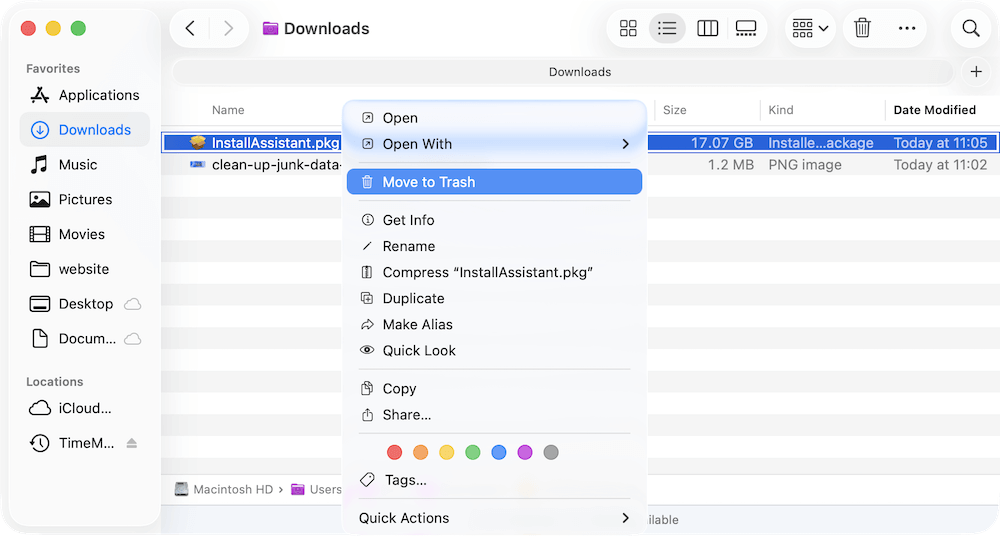
Manage Application Support leftovers:
- Go to Finder → Go to Folder...
- Type: ~/Library/Application Support
![clean up junk data after upgrading to macOS Tahoe]()
- Look for folders of apps you've uninstalled or no longer use
- Remove those folders to reclaim space
![clean up junk data after upgrading to macOS Tahoe]()
Example:
- Leftover folders from old versions of apps like Adobe Creative Cloud, Microsoft Office, or games can take up gigabytes
🚨 Warning:
★ Only delete folders for apps you're sure are uninstalled
★ If unsure, leave the folder to avoid impacting functioning apps
Use Built-in macOS Storage Management Tools
Apple offers a convenient storage management tool to review and optimize disk space. How to use it:
- Click the Apple Menu → System Settings
- Go to General → Storage
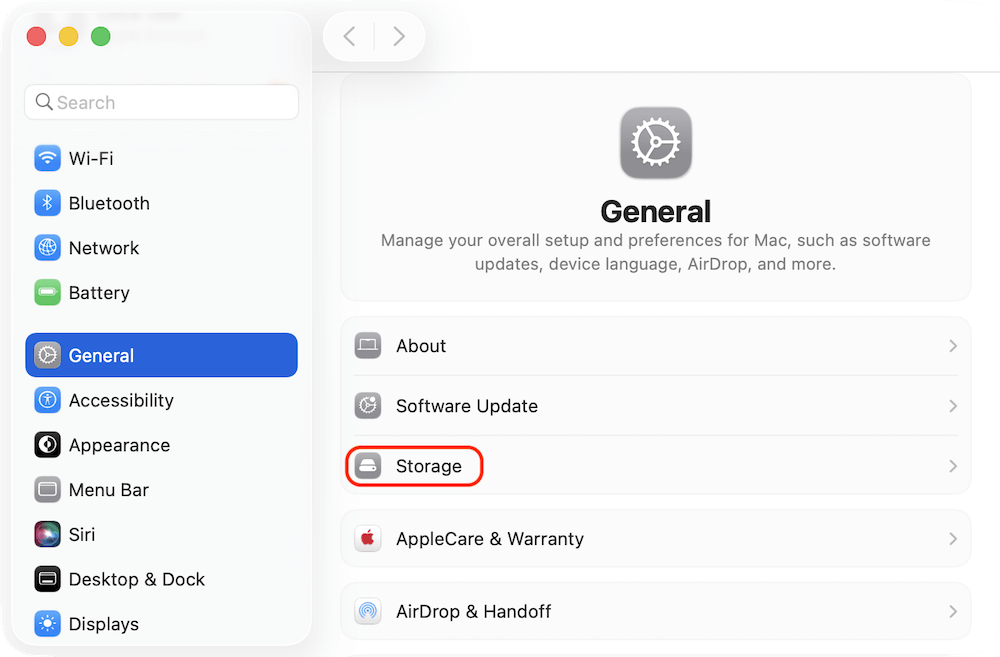
From here, you can review large files and delete unwanted ones
- Optimize iCloud Storage
- Review Recommendations to free up space
- This tool simplifies cleanup without risking essential system files.
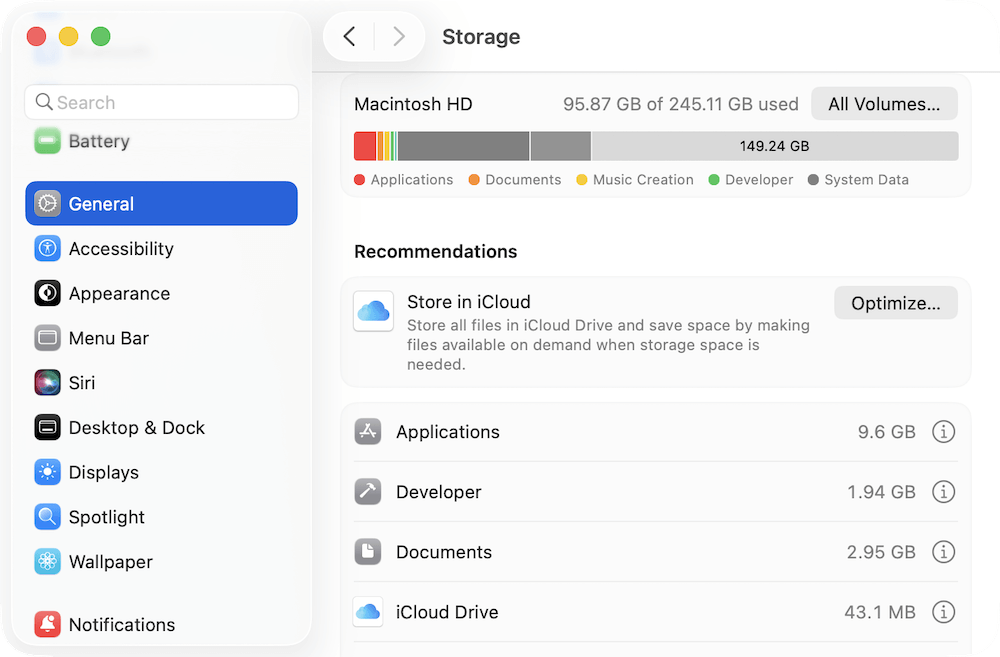
Best Third-Party Tool to Clean Junk Data on macOS Tahoe 26
For a thorough cleanup, reliable third-party apps can automate the process, targeting hidden junk files efficiently. Several Mac cleaning tools are available in the market. Here we recommend Donemax DMcleaner for Mac. The software is comprehensive and includes multiple useful feature. It can help you clean up junk data and optimize your Mac.
Donemax DMcleaner for Mac
- Comprehensive data cleaner tool for macOS Tahoe and other versions.
- Remove junk data and manage macOS effectively.
- All-in-one tool to speed up and optimize Mac.
Here are the popular features DMcleaner for Mac includes:
- Scans for system junk, caches, old logs, and large files
- Removes unwanted apps without leftovers
- Includes performance monitoring tools
- Easy to use, but requires a paid license
- Powerful maintenance and cleaning tool
- Ability to preview files before deletion
- No risk to essential system files
- Compatibility with macOS Tahoe 26
To clean up the junk data on macOS Tahoe 26, you can use the following features of Donemax DMcleaner for Mac:
1. Junk Cleaner - This tool can clean all junk data on your Mac, including system junk, app junk, etc. After scanning, all the junk data will be found and listed. You can just click the Clean button to remove all the junk data.
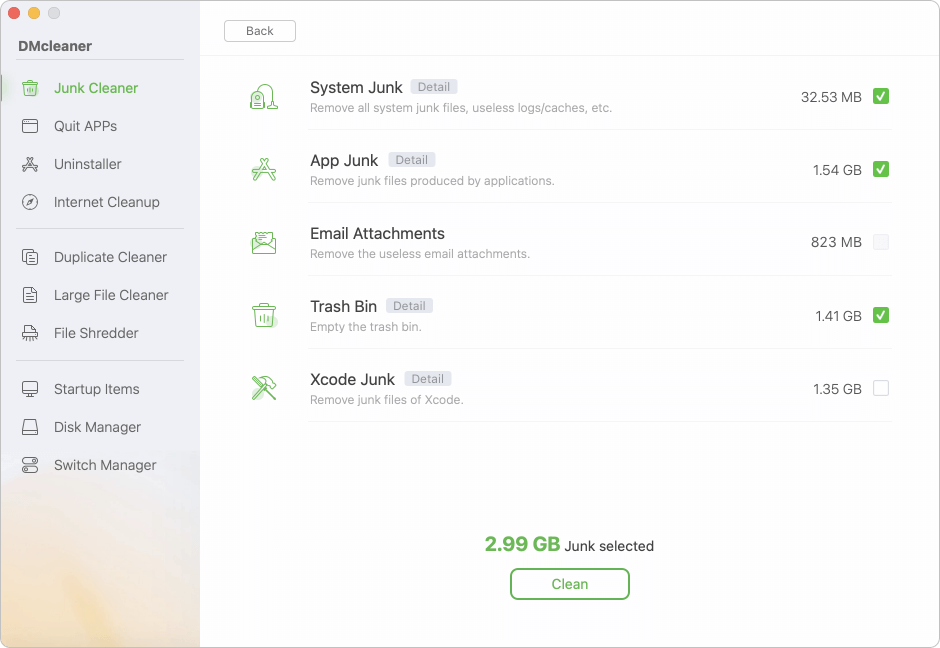
2. Uninstaller - Uninstalling the unwanted applications can help you make more free room on Mac. It can remove the applications and all leftovers. Choose the applications you want to remove and click Uninstall to delete them completely.
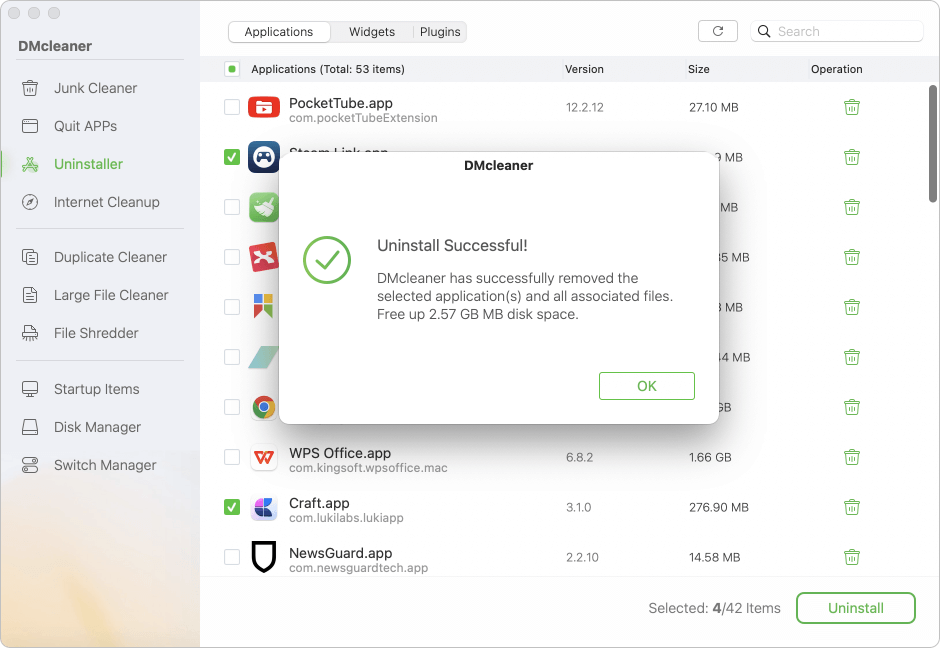
3. Internet Cleanup - With this option, you can clean up browsers' traces, histories, cookies, caches, logs, passwords, etc.
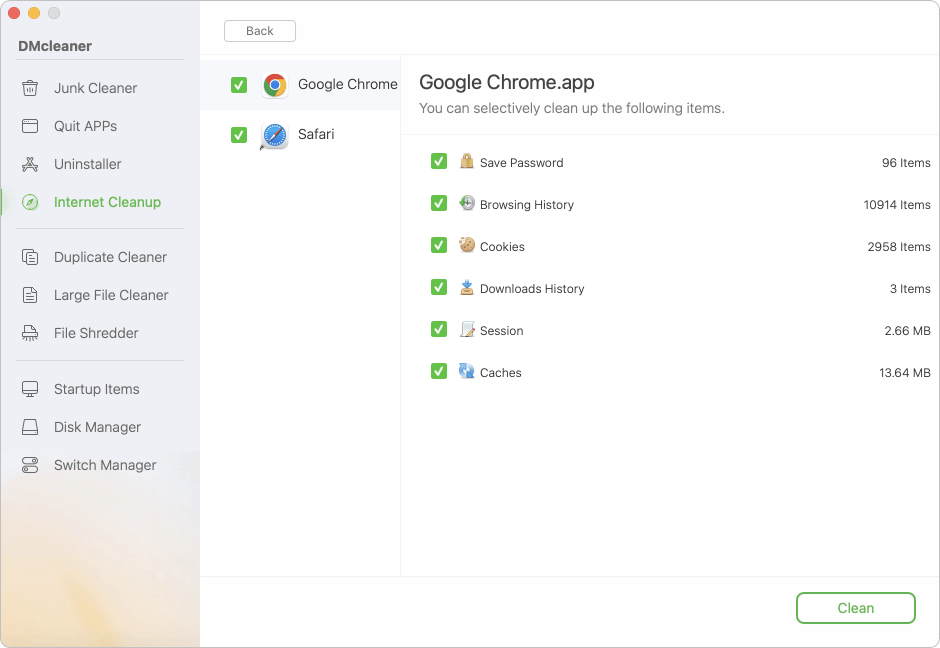
4. Duplicate Cleaner - Delete the duplicated files, like pictures, videos, archives, audio, and any other files, to release more free space on Mac.
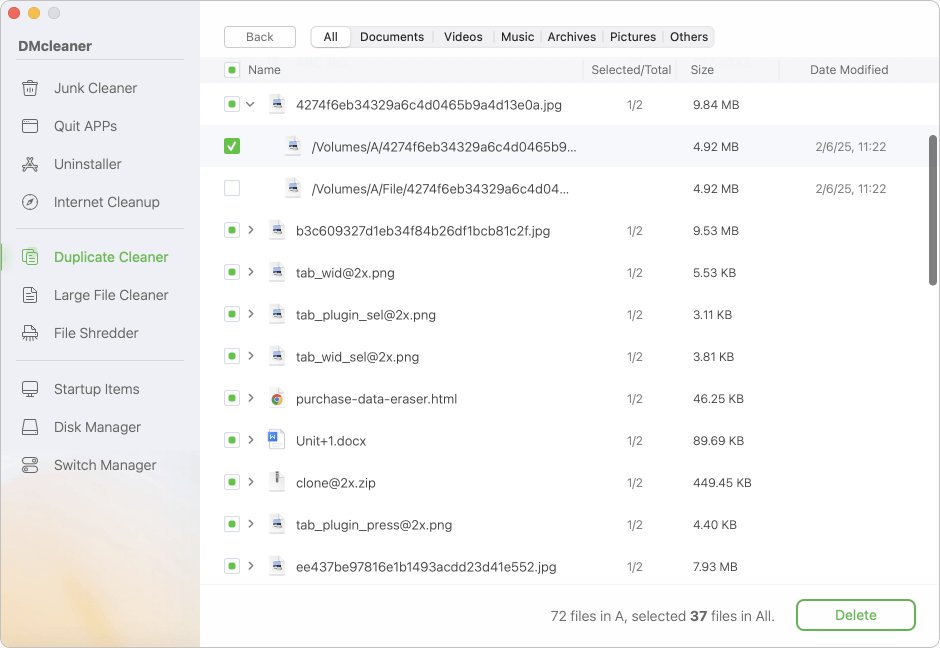
5. Large File Cleaner - If the disk space is limited, this tool can help you find the large files quickly. You can choose the unwanted ones and click Delete button to clear them.
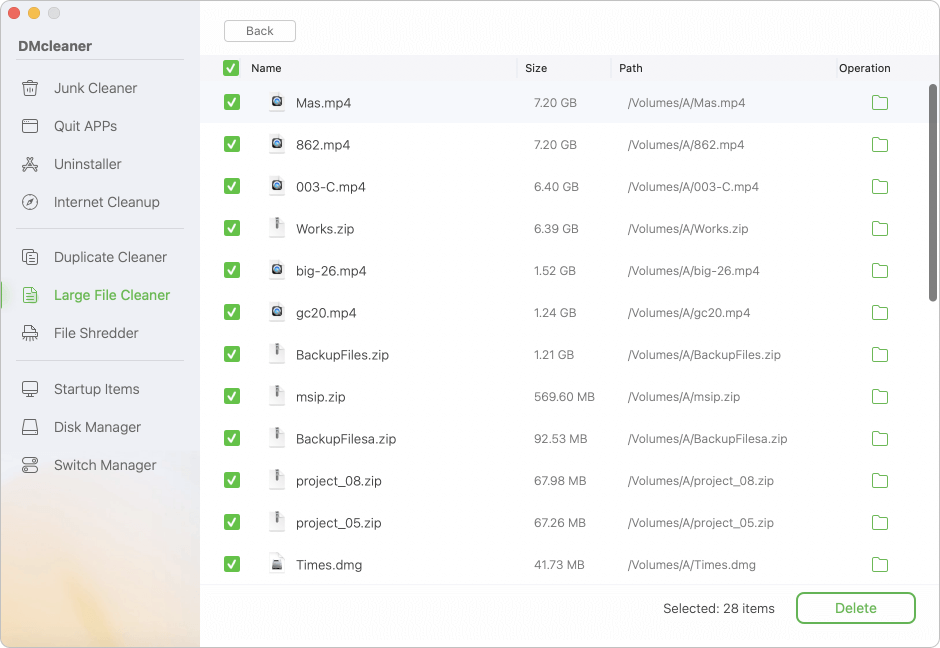
Pros and Cons of using third-party cleaners:
Pros
- Saves time
- Identifies hidden junk files
- Simplifies maintenance
Cons
- Free trial time is limited
Always download from official websites to avoid malicious software.
Additional Tips for Keeping Your Mac Clean
Maintaining your Mac after cleaning ensures long-term performance:
Regular Storage Checks: Periodically use the Storage Management tool to monitor space.
Uninstall Unused Apps: Remove apps you no longer use via Finder or app cleaners.
Clear Browser Data:
- In Safari: Preferences → Privacy → Manage Website Data
- In Chrome/Firefox: Settings → Privacy → Clear Browsing Data
Disable Unnecessary Login Items:
- Go to System Settings → General → Login Items & Extensions
- Remove apps that auto-start unnecessarily
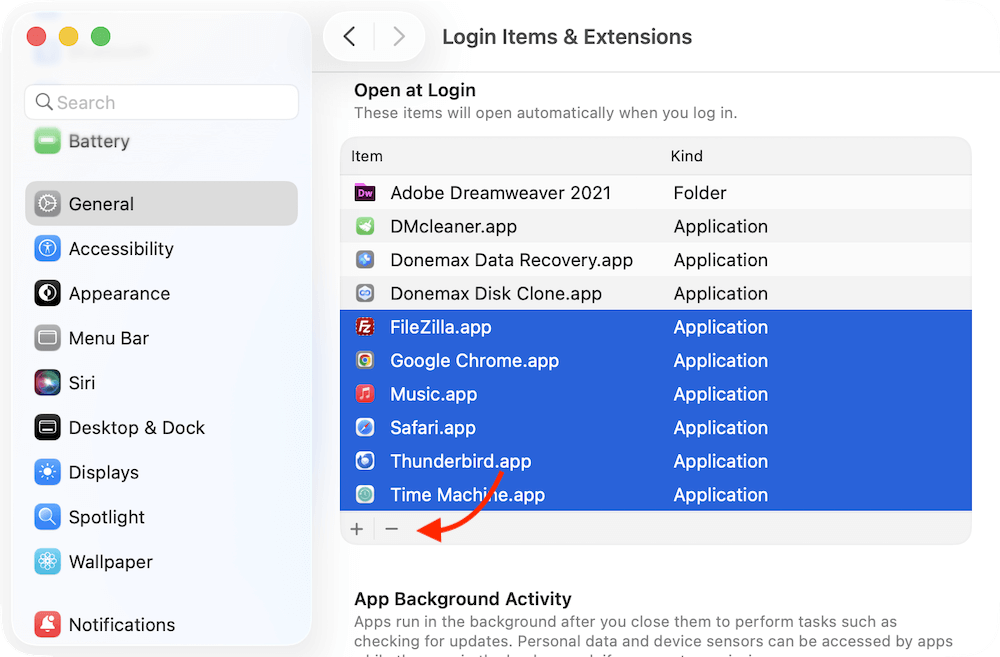
Update Apps and macOS Regularly: Ensures compatibility and removes potential leftover files during updates.
Backup Important Data: Always back up your Mac with Time Machine before deep cleaning, in case critical files are mistakenly deleted.
Conclusion
Upgrading to macOS Tahoe 26 enhances your Mac with better performance, new features, and stability. However, leftover junk files from the upgrade process can waste storage and slow down your system. Cleaning these files manually or with trusted tools like Donemax DMcleaner for Mac can reclaim space, boost performance, and prevent future issues.
Whether you prefer to dive into Finder folders or use automated apps, regular maintenance keeps your Mac healthy and responsive. After cleaning, you'll notice improved speed, more available storage, and a smoother macOS Tahoe 26 experience.
Start your post-upgrade cleanup today and enjoy your Mac at its full potential!


Donemax DMcleanerfor Mac
Donemax DMcleaner for Mac is an award-winning Mac cleanup & maintenance tool. It offers over 10 tools to help Mac users clean junk data. It helps speed up a slow Mac. Additionally, it includes a smart switch manager and disk manager for Mac.
Related Articles
- Oct 24, 2024How to Clear Chrome Data on Mac?
- Jul 21, 2025How to Uninstall and Reinstall Safari on Mac?
- Apr 18, 2025How to Clean Up Junk Data on Mac Studio – Guide 2025
- Aug 06, 2024How to Completely Uninstall Chrome on Mac?
- May 15, 2025Fix MacBook/MacBook Air/MacBook Pro Is Running Slow
- Sep 30, 2024Increase Mac's Storage: Guide to Maximizing Space

Maria
Maria is one of the senior writers & editors of Donemax who lives and works in Sydney, Australia. She loves PC, Mac and Internet Technology. She has 6 years of writing articles about data recovery on PC/Mac, disk cloning solution, data eraser and computer OS optimization, etc. She is also interested in testing various software and digital products.

Gerhard Chou
In order to effectively solve the problems for our customers, every article and troubleshooting solution published on our website has been strictly tested and practiced. Our editors love researching and using computers and testing software, and are willing to help computer users with their problems

